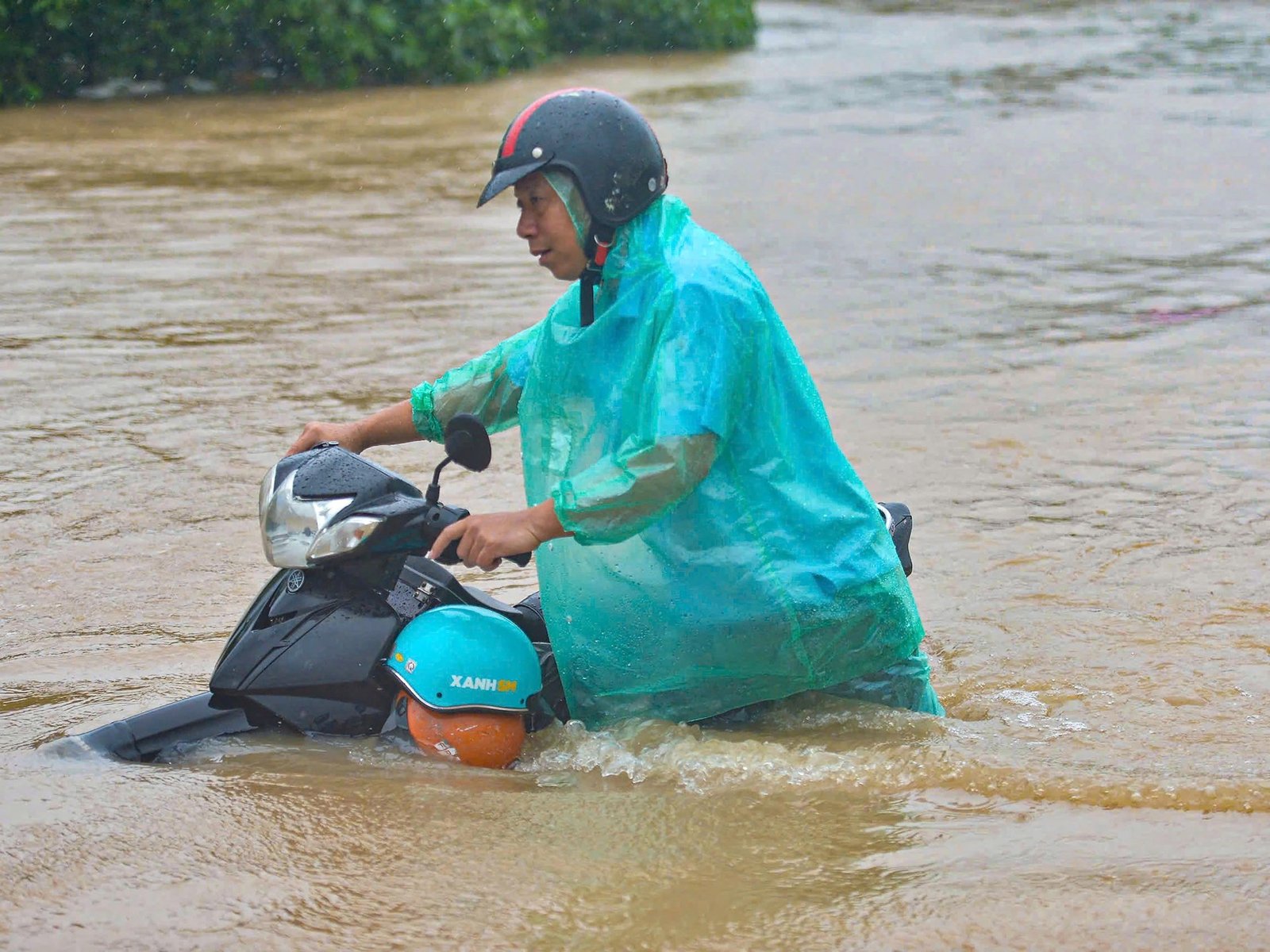The toll from Typhoon Kajiki in Vietnam has tragically risen to three, as rescuers navigate fallen trees and severed power lines, while widespread flooding disrupts daily life in the capital, Hanoi.
The storm made landfall in central Vietnam on Monday, with winds reaching up to 130 kilometers per hour (80 miles per hour), damaging roofs of thousands of homes and leaving over 1.6 million residents without electricity.
By Tuesday, officials reported three fatalities and 13 injuries, warning of potential flash floods and landslides across eight provinces as Kajiki’s relentless rains continued to devastate the region.
Vietnam often faces seasonal typhoons; however, climate change, exacerbated by human activity, is intensifying these storms and creating erratic weather conditions.
Floodwaters have isolated 27 villages in the mountainous interior, and more than 44,000 individuals have been evacuated in anticipation of the storm’s impact.
In northern Hanoi, heavy rainfall led to extensive street flooding, causing significant traffic disruptions on Tuesday morning.
After weakening to a tropical depression, Kajiki moved westward into northern Laos, bringing intense rainfall to the area.
In the first seven months of 2025 alone, Vietnam experienced over 100 fatalities or missing persons due to natural disasters, according to reports from the agriculture ministry.
Last September, Typhoon Yagi struck northern Vietnam, Laos, Thailand, and Myanmar, resulting in floods and landslides that claimed over 700 lives and caused economic damages amounting to billions of dollars.

